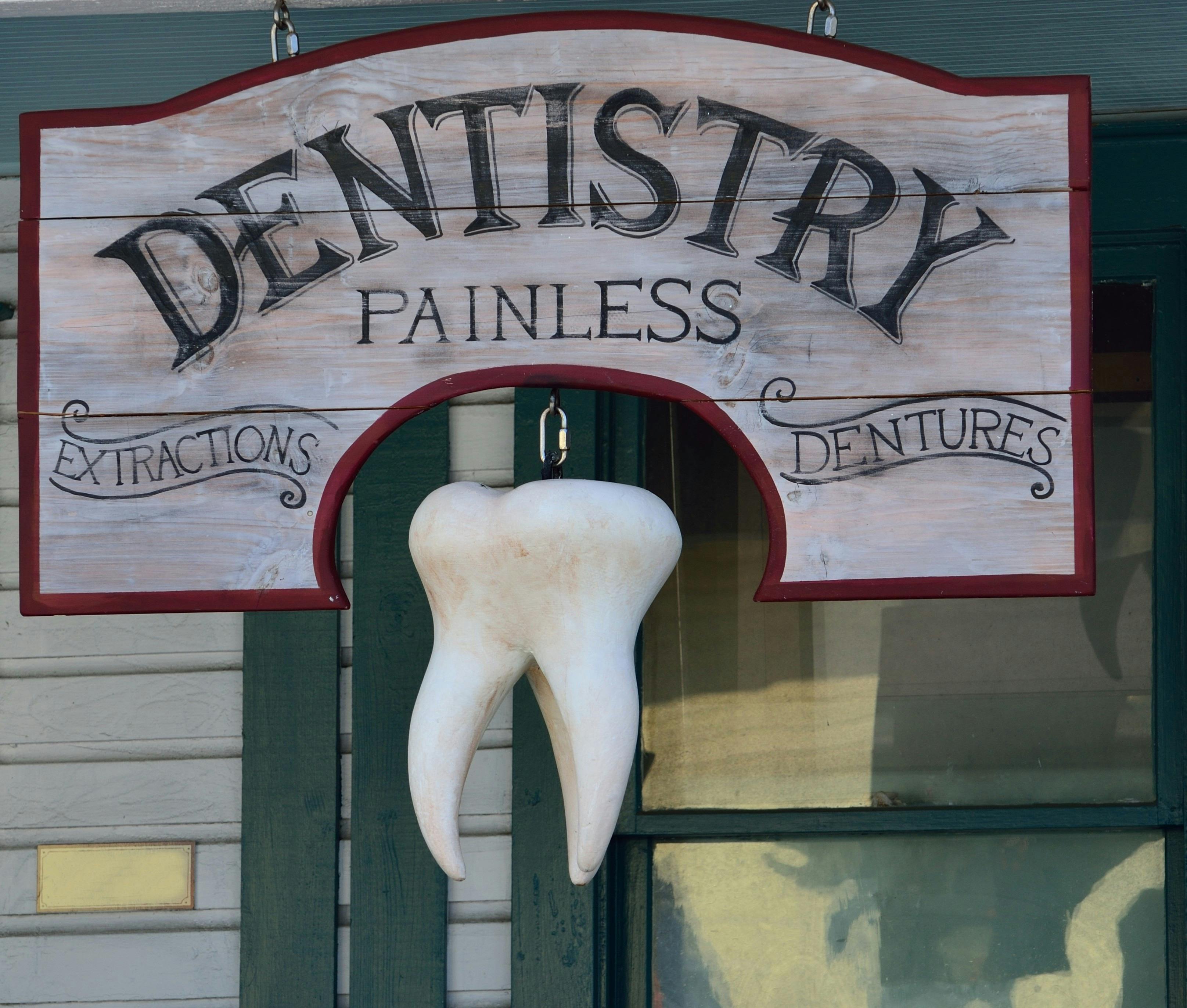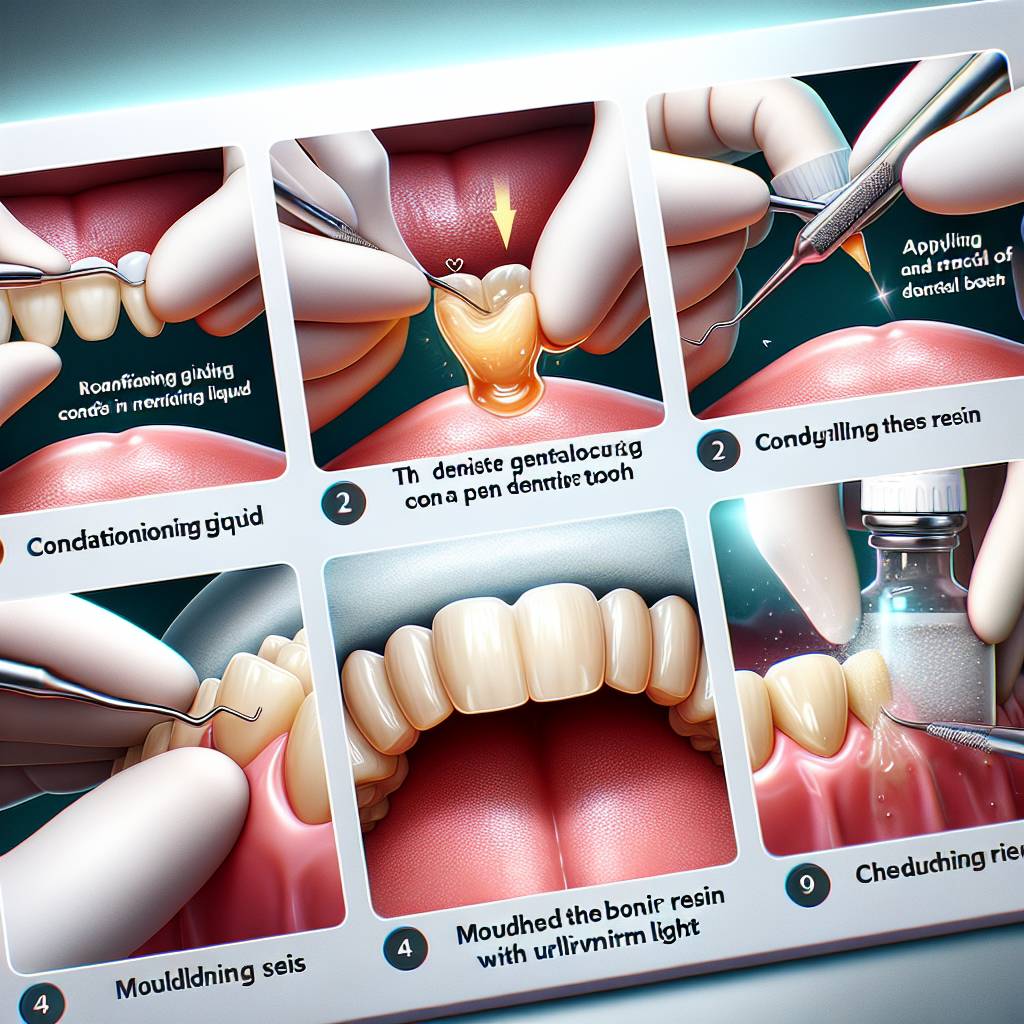Bonding teeth is a dental procedure that can be used to improve the appearance of your teeth. It involves the application of a special adhesive material to the surface of your tooth, which bonds to the tooth’s enamel, creating a stronger and healthier-looking tooth. The bonding material can also be used to fill in gaps between teeth or to repair chips and cracks in the enamel. Bonding can also be used to change the color of your teeth or to make them appear straighter and more even. This procedure is generally painless and can last up to 10 years before needing touch-ups.Bonding teeth is a dental procedure where a tooth-colored resin material is applied and hardened with a special light, which then bonds the material to the tooth to restore or improve its appearance. It can be used to repair chipped, broken, cracked, discolored, or misaligned teeth. Bonding can also be used to close spaces between teeth and make them look more uniform.
The Benefits of Bonding Teeth
Bonding teeth is an excellent option for improving the appearance of your teeth. It can be used to repair chipped, discolored, or misaligned teeth. It is a relatively simple and quick procedure that can be done in one visit to your dentist. Bonding is also a cost-effective way to improve the look of your smile without having to replace any existing teeth. Here are some of the benefits of bonding teeth:
Aesthetics
Bonding teeth can greatly improve the aesthetics of your smile. Bonding material comes in many different colors and shades, allowing you to choose a color that matches your natural tooth color. This makes it an ideal solution for minor aesthetic issues such as discoloration or chips.
Durability
Bonding material is made from durable materials that are designed to last for many years with proper care. With proper care, bonding material can last up to 10 years before needing to be replaced or repaired. This makes it an attractive option for people who want a long-lasting solution for their dental issues.
Cost-Effective
Bonding teeth is a cost-effective way to improve the appearance of your smile without having to invest in more costly treatments such as veneers or implants. The cost of bonding will depend on the amount of material needed, but it is typically much less expensive than other cosmetic treatments. In addition, bonding does not require any preparation time like other treatments, which makes it a faster and more affordable option.
These are just a few of the benefits of bonding teeth. If you’re looking for an effective and affordable way to improve the look of your smile, bondings might be right for you! Talk with your dentist about whether bonding could be the right solution for you and if so, what kind of results you can expect.
Cost of Bonding Teeth
The cost of bonding teeth depends on the extent of the treatment needed. The type of material used, the size and shape of the affected tooth or teeth, and the number of teeth involved in the treatment all play a role in determining the cost. Dental insurance may cover some or all of the cost, depending on your plan and your dentist’s policies. The average cost for dental bonding is around $300 to $600 per tooth. For larger procedures that involve several teeth, it can range from $1000 to $3000.
The type of material used for dental bonding will also affect the cost. Tooth-colored composite resin is typically used, which is more expensive than traditional metal fillings. Porcelain veneers are typically used for more extensive procedures such as extensive wear or discoloration that cannot be corrected with just composite resin bonding. Porcelain veneers usually cost between $800 and $2000 per tooth.
It is important to note that the cost of dental bonding may vary from dentist to dentist based on their location, experience level, and other factors. It is best to consult your dentist for an accurate estimate of how much you will need to pay for your particular procedure.
Who Can Benefit From Bonding Teeth?
Bonding teeth is a great dental treatment that can improve the appearance of your smile. It can be used to repair chips, gaps, and discolored teeth, as well as to make minor corrections to the size and shape of your teeth. Bonding is an affordable and relatively painless procedure that can be completed in one visit. It is a great option for those who want to improve their smile without committing to more invasive treatments such as veneers or crowns.
Bonding can be used to fix gaps between teeth, chips or cracks in the enamel, or discolored areas on the teeth. It can also be used to alter the shape of the tooth by lengthening or shortening it, or by rounding off sharp edges. Bonding is especially effective for small cosmetic changes and does not require major dental work like crowns or veneers do.
Anyone looking for a fast, easy way to improve their smile may want to consider bonding teeth. The procedure usually takes just one visit and requires little preparation or recovery time. Patients with healthy teeth and gums are good candidates for bonding and should discuss their options with their dentist. Those with more complex problems may need additional treatments such as veneers or crowns.
Bonding is not suitable for everyone though; people who grind their teeth may find that the bonding material does not last long before it needs replacing. Additionally, those who suffer from gum disease may need special care when undergoing bonding procedures due to increased risk of infection in this area. Your dentist will discuss these issues with you before proceeding with treatment if necessary.
Overall, bonding can be a great way to enhance your smile without breaking the bank or committing to major dental work. If you think bonding might be right for you, talk to your dentist about what options are available and what results you can expect from this procedure.
What to Expect During a Bonding Teeth Procedure
Bonding teeth is a cosmetic dental procedure used to improve the appearance of your smile. It involves applying a tooth-colored resin material to the surface of the teeth to improve their color, shape, and size. This procedure can also be used to fill in chips or gaps between teeth. Bonding is usually done in one visit and can last for several years with proper care. Here’s what you can expect during a bonding teeth procedure:
Your dentist will first evaluate your teeth and discuss your goals for the procedure. They may also take X-rays or use other imaging techniques to get an accurate picture of your current dental health. Your dentist will then select the appropriate shade of resin material that matches the color of your natural teeth.
Next, your dentist will roughen up the surfaces of your teeth and apply an acidic solution to help the resin material adhere better. Once this is done, they will apply the resin material directly onto each tooth and shape it accordingly. A special light may be used to harden it quickly.
Once the resin material has hardened, your dentist will check its placement and make any necessary adjustments before polishing it for a natural look. The entire process usually takes about an hour or two depending on how many teeth need to be bonded.
Afterwards, you should avoid eating or drinking anything that could stain or damage the bonding material for at least 24 hours. Good oral hygiene habits such as brushing twice daily and flossing regularly are also important in order to maintain the results of bonding for longer periods of time.

Bonding Teeth
Bonding teeth is a procedure that involves affixing a tooth-colored material to a tooth’s surface in order to improve its appearance. This can be done for a variety of reasons, including restoring decayed or broken teeth, closing gaps between teeth, and changing the shape or color of a tooth. Bonding materials are available in many forms and come in various shades to match the natural color of your teeth. The most common materials used for bonding teeth include composite resin, porcelain veneers, ceramic onlays, and dental amalgam.
Composite resin is the most commonly used material for bonding teeth. It is a mixture of plastic and glass particles which can be hardened to form a durable bond with the tooth’s surface. It is available in several shades, which allows it to be closely matched to the natural color of your teeth. Composite resin can be used for both cosmetic and restorative purposes, such as filling cavities or repairing chips and cracks.
Porcelain veneers are also commonly used for bonding teeth. They are thin shells made from porcelain that are bonded onto the front surface of the tooth in order to improve its appearance. Veneers provide an excellent option for those looking to enhance their smile by covering up discoloration or other imperfections on their front teeth.
Ceramic onlays are an option for those looking to restore more substantial damage such as fractures or broken cusps on their molars. They are made from high-strength ceramic materials that provide excellent durability while still offering an aesthetically pleasing result.
Finally, dental amalgam is another type of material that is often used in bonding procedures. Dental amalgam consists of metal alloy particles that are mixed with mercury to form a strong bond with the tooth’s surface. Although it is less aesthetically pleasing than other materials such as composite resin or porcelain veneers, it offers excellent durability and strength which makes it ideal for restoring severely damaged teeth or filling large cavities.
How Long Does Bonding Teeth Last?
Dental bonding can be a great way to make cosmetic improvements to teeth that are chipped, cracked, discolored, or have gaps between them. The procedure is relatively quick and relatively inexpensive when compared with other restorative treatments such as dental veneers or crowns. But like any dental procedure, it’s important to understand how long the results will last before you decide whether it is the right option for you.
The short answer is that dental bonding typically lasts anywhere from three to 10 years, depending on your oral hygiene habits and lifestyle. It’s important to note that bonding material isn’t as strong as enamel, which means it may chip or break off over time if subjected to wear and tear such as grinding of teeth (bruxism). Therefore, it’s important to take extra precautionary measures if you have a tendency to grind or clench your teeth at night.
In terms of daily care for bonded teeth, the best way to maximize the longevity of bonding is to brush twice a day with fluoride toothpaste and floss once a day. It’s also recommended that you avoid eating hard or sticky foods such as candy and chips which can cause the material used in bonding to crack or chip. Additionally, while drinking coffee, tea, red wine and other dark-colored beverages is okay in moderation, it’s best to avoid them altogether if possible since they can stain the material used in bonding over time.
Overall, dental bonding can be an effective way of restoring your smile and achieving a more aesthetically pleasing result; however, understanding how long it lasts will help you make an informed decision about whether this treatment is right for you.
How to Take Care of Bonded Teeth
Bonding is a process used to repair chipped, cracked, or discolored teeth. It involves applying a composite resin material to the tooth surface and sculpting it into shape. After the material is hardened, your dentist polishes it to give it a natural, glossy appearance. Taking care of bonded teeth requires following your dentist’s instructions and practicing good oral hygiene. Here are some tips for proper care:
Brush and Floss Regularly
It’s important to brush your teeth at least twice a day with a soft-bristled toothbrush and fluoride toothpaste. Flossing daily helps remove plaque and prevent cavities from forming between your teeth or around the bonding material. Be sure to use gentle motions when brushing or flossing near the bonded area.
Avoid Staining Foods and Drinks
Some foods and drinks can stain the bonding material, making it look dull or discolored. Avoid dark-colored beverages such as coffee, tea, and soda as much as possible. If you do consume them, use a straw to minimize contact with your teeth. It’s also best to avoid eating highly acidic foods such as citrus fruits or tomatoes.
Visit Your Dentist Regularly
Regular dental checkups are necessary for ensuring that the bonding material remains in good condition. During each visit, your dentist will check for signs of wear or damage and may recommend touch-ups if necessary. They will also clean your bonded teeth so they stay free from plaque buildup.
By following these tips, you can ensure that your bonded teeth remain healthy and strong for years to come. Remember that proper oral hygiene is key for keeping any dental work in top condition!

Conclusion
Bonding teeth is a quick and relatively inexpensive way to improve the appearance of your smile. It is a popular choice among patients who do not want to undergo more invasive cosmetic dentistry procedures. The process of bonding teeth is minimally invasive, and it can usually be completed in a single appointment. The bonding material used for the procedure is also strong enough to withstand the force of biting and chewing, making it an ideal choice for many people.
Bonding teeth may not be the best choice for everyone; however, it can be an excellent option if you are looking for a simple way to improve the appearance of your smile. If you are considering this type of procedure, talk to your dentist about whether it is right for you.
Ultimately, bonding teeth is an effective way to enhance the look of your smile without having to undergo extensive and costly cosmetic dentistry procedures. With proper care and maintenance, these results can last for several years at a time. To find out more about this procedure and if it’s right for you, contact your dentist today!

